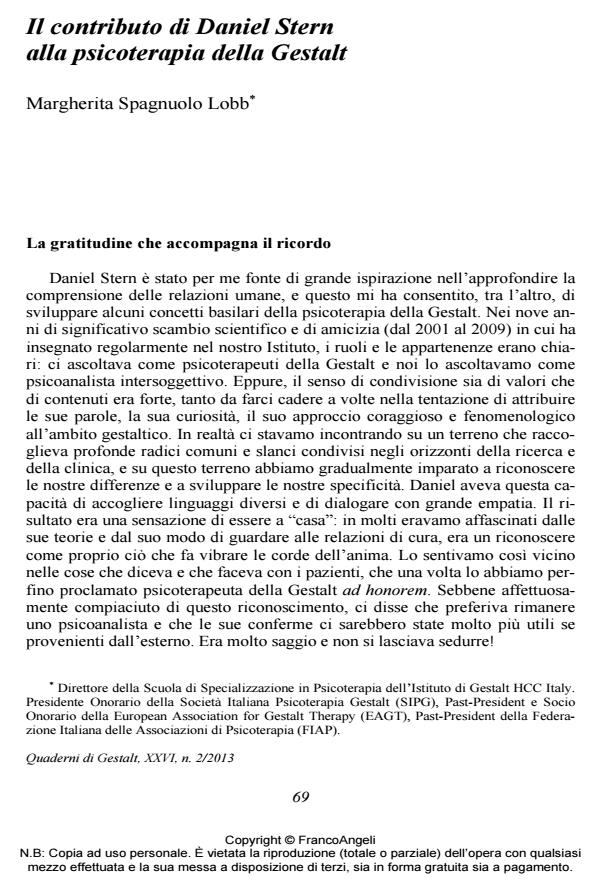Daniel Stern’s contribution to gestalt psychotherapy
Journal title QUADERNI DI GESTALT
Author/s Margherita Spagnuolo Lobb
Publishing Year 2014 Issue 2013/2
Language Italian Pages 17 P. 69-85 File size 777 KB
DOI 10.3280/GEST2013-002010
DOI is like a bar code for intellectual property: to have more infomation
click here
Below, you can see the article first page
If you want to buy this article in PDF format, you can do it, following the instructions to buy download credits

FrancoAngeli is member of Publishers International Linking Association, Inc (PILA), a not-for-profit association which run the CrossRef service enabling links to and from online scholarly content.
The author goes over the work of the famous intersubjective psychoanalyst and identifies five points of Stern’s theory where comparison with gestalt therapy is particularly interesting: developmental perspective, theory of self, implicit relational knowledge, the now-moment, and forms of vitality. She underlines as, at the end of his ingenious research way and theoretical development, Stern could see in each relationship, especially in psychotherapy and arts, the same beauty that he found in mother-baby interactions. What is shared between gestalt approach and Daniel Stern’s model is an aesthetic sight to human relations, although this similarity results from different research paths: the study of early relations for Stern and a socio-political interest for gestalt therapy. Stern’s theories represent for gestalt psyhotherapists a possibility of learning and evolution, especially as far as regards a more phenomenological language and the related research work.
Keywords: Daniel Stern, intersubjectivity, now-for-next, polyphonic development of domains, aesthetics, attachment, embodied empathy
Margherita Spagnuolo Lobb, Il contributo di Daniel Stern alla psicoterapia della Gestalt in "QUADERNI DI GESTALT" 2/2013, pp 69-85, DOI: 10.3280/GEST2013-002010